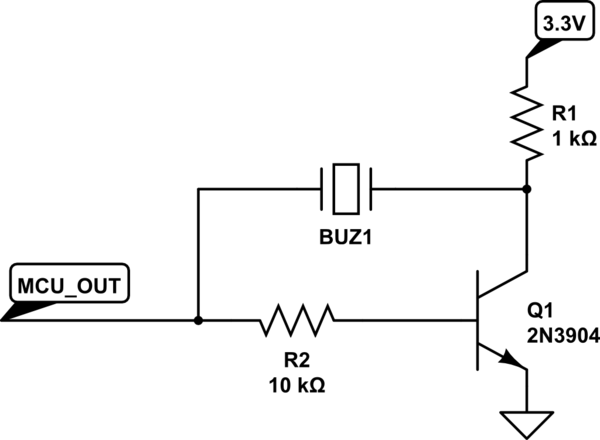I am trying to make a piezoelectric transducer buzz loudly, but have so far only been able to make it create a quiet hum. I have tried using a basic amplification circuit with an NPN, but this made very little difference.
I am working with microcontroller that words at 3.3v. How would I get a loud buzz even for a short period of time, from a piezoelectric transducer similar to the below image.


